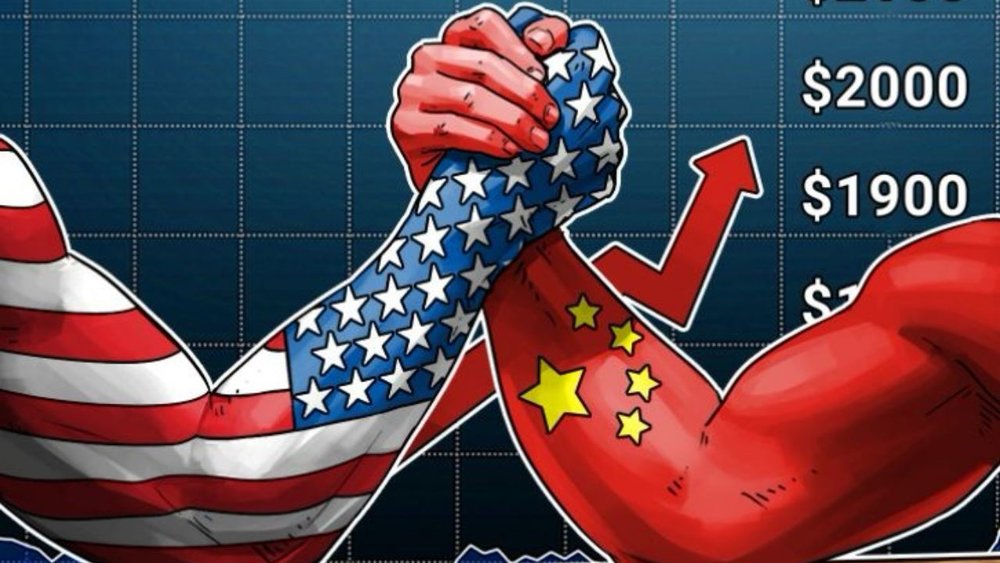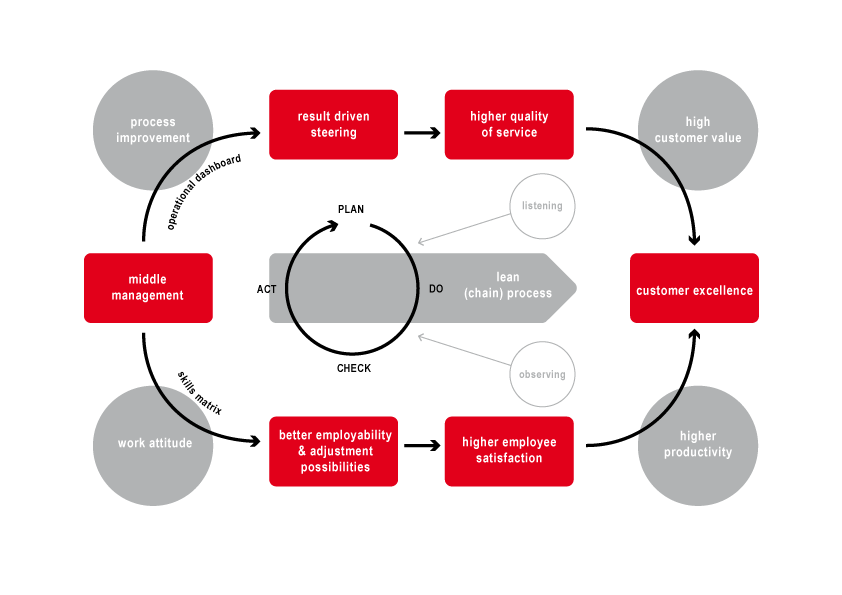U.S.-China Relations: Breakdown And The Looming Cold War

Table of Contents
Economic Competition: A Trade War and Beyond
The economic rivalry between the U.S. and China is a significant driver of current tensions. This competition extends far beyond a simple trade war, encompassing a broader struggle for technological dominance and economic independence.
The Trade War and Tariffs
The imposition of tariffs by both the U.S. and China on a wide range of goods has significantly impacted global trade. The 2018 trade war, initiated with tariffs on steel and aluminum, escalated into a broad tariff battle affecting trillions of dollars in trade.
- Examples of specific tariffs: The U.S. imposed tariffs on Chinese solar panels, telecommunications equipment, and various manufactured goods. China retaliated with tariffs on agricultural products and other U.S. exports.
- Retaliatory measures: Both countries employed various retaliatory measures, including increased customs inspections and anti-dumping investigations.
- Affected industries: Industries ranging from agriculture and manufacturing to technology suffered disruptions and economic losses as a result of the trade war. Trade volume between the two countries saw a significant decline during the peak of the conflict.
Technological Rivalry: The 5G Race and Semiconductor Wars
The competition for technological leadership is particularly intense in sectors like 5G, artificial intelligence (AI), and semiconductors. This rivalry reflects a broader struggle for global technological dominance and economic influence.
- Specific companies involved: The competition between Huawei (China) and Qualcomm (U.S.) in the 5G sector exemplifies this rivalry. Government policies play a crucial role in shaping the competitive landscape, with both countries investing heavily in research and development and providing subsidies to domestic companies.
- Government policies and investment strategies: The U.S. government has implemented measures to restrict Huawei's access to American technology, while China has invested heavily in its domestic semiconductor industry to reduce reliance on foreign technology.
Investment Restrictions and Decoupling
A growing trend of limiting investments and seeking to reduce economic interdependence is further exacerbating tensions. This "decoupling" involves efforts to diversify supply chains and reduce reliance on each other for critical goods and services.
- Examples of restrictions: The Committee on Foreign Investment in the United States (CFIUS) has scrutinized and blocked numerous Chinese investments in U.S. companies, while China has implemented similar restrictions on foreign investment in sensitive sectors.
- Supply chain diversification efforts: Both countries are actively pursuing strategies to diversify their supply chains, reducing their reliance on each other for essential components and goods. This includes reshoring manufacturing and exploring alternative sourcing options.
Geopolitical Tensions and Military Buildup
Beyond economic competition, geopolitical tensions and military buildup contribute significantly to the strained U.S.-China relationship. The disputes in the South China Sea and the situation surrounding Taiwan are key flashpoints.
South China Sea Disputes
Territorial disputes in the South China Sea, fueled by competing claims over islands and resources, have led to an increased military presence and heightened tensions.
- Specific islands: Disputes over islands like the Spratly Islands and Paracel Islands have escalated due to land reclamation and military installations by China.
- Naval exercises and diplomatic tensions: Both the U.S. and China conduct frequent naval exercises in the region, resulting in close encounters and increased diplomatic tensions.
Taiwan Strait Crisis
The future of Taiwan remains a major source of friction. China considers Taiwan a breakaway province and has not ruled out the use of force to achieve reunification.
- China's stance on Taiwan: China views Taiwan's independence as a red line and has vowed to prevent any formal declaration of independence.
- US military support for Taiwan: The U.S. provides Taiwan with defensive weapons and has stated its commitment to Taiwan's self-defense. This commitment, however, does not necessarily equate to a guarantee of military intervention in the event of a Chinese attack.
- Potential for escalation: The risk of miscalculation and accidental escalation remains significant, particularly given the increasing military deployments in the region.
The Global Power Struggle
The competition for global influence extends to various regions, including Africa and Latin America. Both countries engage in diplomatic initiatives, providing aid and infrastructure projects to gain strategic partnerships.
- Examples of diplomatic initiatives: Both the U.S. and China have invested heavily in infrastructure projects (Belt and Road Initiative vs. Build Back Better World) and diplomatic engagement across the globe. This competition for influence creates further points of potential conflict.
Ideological Differences and Human Rights Concerns
Fundamental differences in political systems and values, coupled with human rights concerns, further complicate U.S.-China relations.
Democratic Values vs. Authoritarianism
The contrasting political systems and values of the U.S. (a liberal democracy) and China (a one-party state) create an inherent ideological divide.
- Human rights issues in China: Issues such as the treatment of Uyghurs in Xinjiang, restrictions on freedoms in Hong Kong, and the lack of political pluralism are major sources of contention. The U.S. and many other countries have imposed sanctions and criticized China's human rights record.
Disinformation and Propaganda
Both countries engage in information operations and propaganda campaigns, shaping public narratives and exacerbating tensions.
- Examples of online influence operations: Both sides utilize social media and state-controlled media to spread narratives that support their interests and undermine the other.
The Role of International Organizations
The U.S. and China's interactions within international organizations like the UN and WTO are often marked by disagreement and rivalry.
- Examples of disagreements and vetoes: China's use of its veto power in the UN Security Council on issues related to human rights and geopolitical conflicts highlights the challenges in multilateral cooperation.
The Potential for a New Cold War
The cumulative effect of these factors raises the specter of a new Cold War between the U.S. and China.
Defining a "Cold War" Scenario
A new Cold War would not necessarily involve direct military conflict but would likely include:
- Proxy conflicts: Support for opposing sides in regional conflicts.
- Arms races: Increased military spending and technological advancements in weaponry.
- Ideological clashes: Competition for influence and the spread of competing ideologies.
Economic and Military Implications
A prolonged period of heightened tensions could have significant economic and military implications:
- Disruptions to global supply chains: Further decoupling and trade restrictions could disrupt global supply chains, leading to economic instability.
- Increased military spending: An arms race could lead to a significant increase in military spending by both countries, diverting resources from other crucial sectors.
- Regional conflicts: The risk of proxy conflicts and accidental escalation in regions like the South China Sea and Taiwan Strait remains high.
Paths to De-escalation
Despite the significant challenges, there are avenues for de-escalation and improved relations:
- Diplomatic initiatives: Renewed efforts at high-level dialogue and diplomatic engagement are crucial.
- Communication channels: Establishing clear and reliable communication channels to reduce the risk of miscalculation.
- Areas for potential cooperation: Identifying areas of common interest, such as climate change or global health, where cooperation is possible.
Avoiding the Abyss: The Future of U.S.-China Relations
The deterioration of U.S.-China relations is driven by a complex interplay of economic competition, geopolitical tensions, ideological differences, and human rights concerns. The potential for a new Cold War, with its far-reaching consequences, is a real and present danger. Understanding the complexities of U.S.-China relations is crucial for navigating this perilous path. Learn more about the challenges facing U.S.-China relations and engage in constructive dialogue to prevent a further breakdown. Stay informed about the evolving landscape of U.S.-China relations and contribute to a peaceful resolution.

Featured Posts
-
 Understanding The Karen Read Case A Timeline Of Key Events
Apr 22, 2025
Understanding The Karen Read Case A Timeline Of Key Events
Apr 22, 2025 -
 Will The Next Pope Continue Franciss Legacy The Conclave And The Future Of The Church
Apr 22, 2025
Will The Next Pope Continue Franciss Legacy The Conclave And The Future Of The Church
Apr 22, 2025 -
 Ftc Investigates Open Ais Chat Gpt What It Means For Ai
Apr 22, 2025
Ftc Investigates Open Ais Chat Gpt What It Means For Ai
Apr 22, 2025 -
 Aramco And Byd Join Forces Exploring The Future Of Electric Vehicles
Apr 22, 2025
Aramco And Byd Join Forces Exploring The Future Of Electric Vehicles
Apr 22, 2025 -
 How Middle Management Drives Company Performance And Employee Satisfaction
Apr 22, 2025
How Middle Management Drives Company Performance And Employee Satisfaction
Apr 22, 2025
